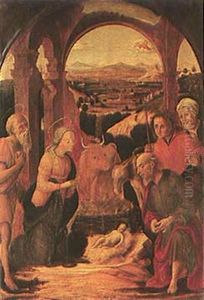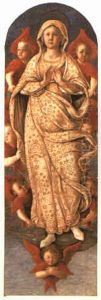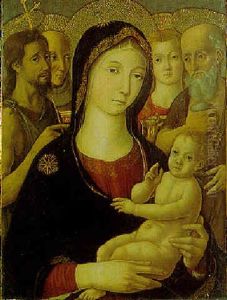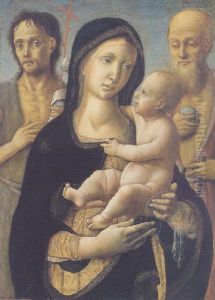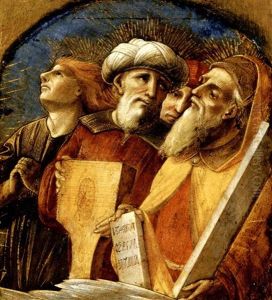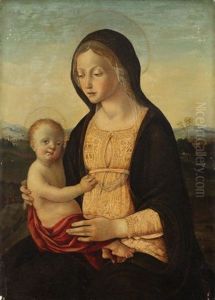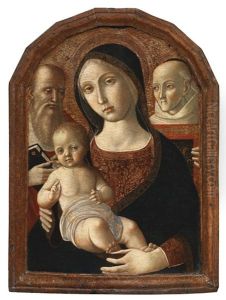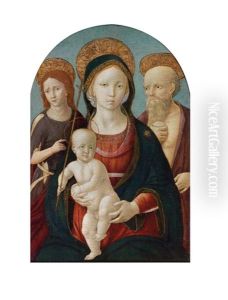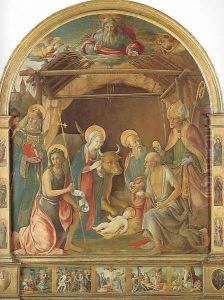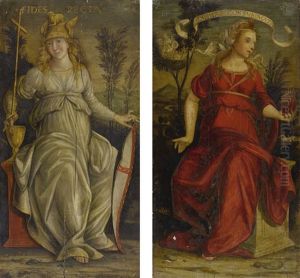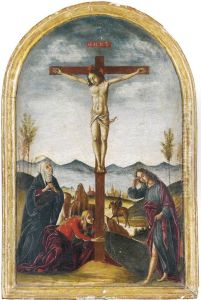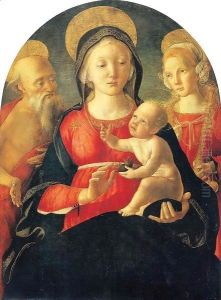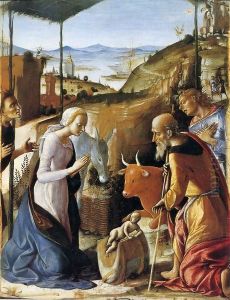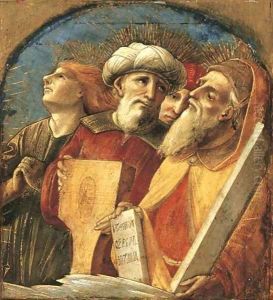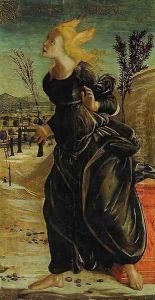Pietro di Francesco degli Orioli Paintings
Pietro di Francesco degli Orioli was an Italian painter active during the Renaissance period, primarily known for his work in the Sienese school of painting. Born in 1458 in Siena, Italy, Orioli was a part of a period that saw a flourishing of arts and culture, often referred to as the Quattrocento, which is the Italian term for the 15th century. Orioli's contributions to Renaissance art are often overshadowed by more prominent figures of the time, such as Leonardo da Vinci and Michelangelo, but his work remains a significant example of the Sienese artistic tradition.
Orioli's artistic training and early career are not well documented, but it is believed that he was a pupil of Matteo di Giovanni, another Sienese painter. He may have also been influenced by the works of Francesco di Giorgio and Benvenuto di Giovanni, who were leading artists in Siena during the second half of the 15th century. Orioli's style is characterized by the use of vibrant colors, elegant figures, and a delicate handling of light and shadow, which was typical of the Sienese school.
Throughout his career, Orioli completed numerous religious commissions, including altarpieces and frescoes for churches and other religious institutions in and around Siena. One of his most notable works is the altarpiece 'Assumption of the Virgin' for the Cathedral of Siena. Unfortunately, many of his frescoes have not survived or are in a deteriorated state, making it difficult to fully assess his oeuvre. Despite this, his paintings that do survive show a remarkable ability to convey narrative and emotion, and they continue to be studied and appreciated for their artistic merit.
Pietro di Francesco degli Orioli passed away prematurely at the age of 38 in the year 1496. His untimely death meant that his body of work was relatively limited compared to other artists of the era. Nevertheless, his contributions to the Sienese school are significant, and his works can be found in various museums and collections, providing insight into the rich artistic heritage of Renaissance Siena.

